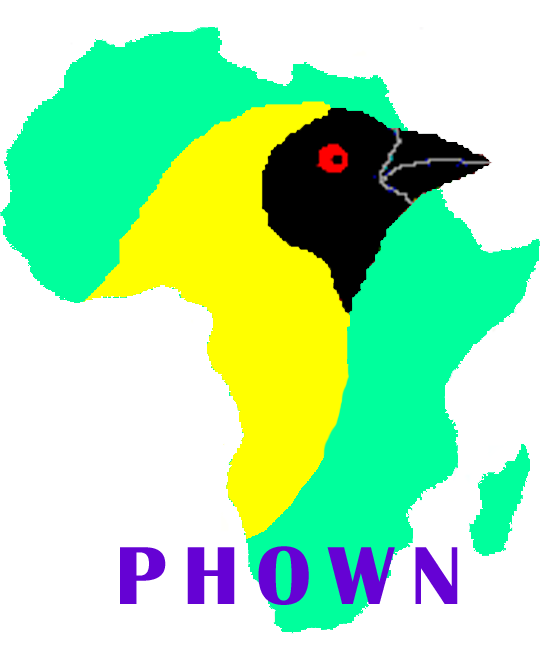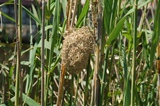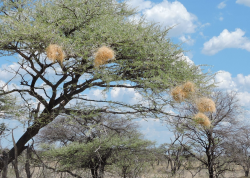Weaver news
| PHOWN (PHOtos of Weaver Nests) has been running for 8.5 years, having started in July 2010. Thanks to your participation, over 28000 records have been submitted! Of 117 weaver species, there is at least one PHOWN record for 94 species (80%). The species without PHOWN records are mostly rare or range restricted species. It should be easy to obtain PHOWN records for some of the outsatanding species, however, eg. the Northern Red Bishop is fairly widespread north of the equator, and Bertram's Weaver is locally common in parts of Malawi. See a list of weavers without PHOWN records here.
2018 records During 2018 a total of 71 participants submitted PHOWN records, most of these were mainly from South Africa, but also residents from Gambia, Kenya, Malawi, Mozambique, Namibia, Nigeria, Swaziland, United States, Zambia, and Zimbabwe. 1265 PHOWN records were submitted in 2018, for at least 30 weaver species. Four species had over 100 records each for 2018: Southern Masked Weaver (388), Cape Weaver (231), White-browed Sparrow-Weaver (149), and Baglafecht Weaver (106). One species, the Crested Malimbe, was added to PHOWN for the first time during 2018 - Maans Booysen photographed a Crested Malimbe building its nest in Kakum Forest in Ghana. Research An important paper using the PHOWN database was published in 2017: "Birds and animals using weavers nests", Biodiversity Observations 8.28: 1-17 (pdf). A follow up paper was based on literature records, including this Biodiversity Observations paper: "Birds adopting weaver nests for breeding in Africa", Ostrich 89(2):131-138 (abstract). More papers using the PHOWN database are being planned, looking at nest sites, colony sizes, etc, so keep the records coming in!
Species focus - nest sites of the White-browed Sparrow-Weaver Historically, this weaver nested in thorny trees, but in recent decades it has started nesting in exotic trees (without thorns) and on man-made structures. The latter include pylons, telephone poles and wires. There are over 6000 PHOWN records for this species, with 37 of these on man-made sites. Remarkably, several records are of nests built on telephone wires - since these weavers build nests by inserting pieces of dry grass (rather than true weaving), it would be interesting to observe them starting a new nest on a wire. Also, White-browed Sparrow-Weavers are known to build their nests on the leeward side of a nest tree and this provides a 35% increase in the useful life of a nest, compared with a nest built on the windward side. Various theories have been proposed, but protection from the prevailing wind seems to be the most important factor in choosing which side of a tree to build. Useful links Weaver species pages - click on a species on this list to read about it. Participants list - click on your name on this list to see a summary of your records. Submitting records Please include a Nest count if possible as this is very valuable for studying variation in colony sizes. For Sociable Weavers nest count is the total number of chambers (not nest masses) - if you can't count the chambers, omit nest count, but you can state the number of nest masses in the Notes. For colonies you visit regularly, please submit repeat records, especially if with a Nest count. Also remember to select the Nest Site type - Tree, Reed, Man-made, or Other - whichever fits best. Tree includes bushes, Reeds includes grass or weed sites, Man-made includes roof edges, powerlines and pylons, while Other is for mixed sites (eg a colony in a tree and the reeds directly below the tree). Thanks! Thanks for your participation! Every record is valuable! Keep the records coming in! |












